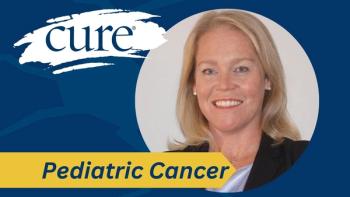Patients with locally advanced, unresectable or metastatic esophageal squamous cell carcinoma (ESCC) who responded to first-line Tevimbra (tislelizumab) plus chemotherapy showed improved overall survival (OS) with deeper responses and a longer time to maximum response, according to data from the phase 3 RATIONALE-306 study presented at the 2025 ASCO Gastrointestinal Cancers Symposium.
As of November 24, 2023, 68.3% (207 patients) of patients in the intention-to-treat population who received Tevimbra plus chemotherapy achieved a response, with a median time to response of 6.1 weeks. Most responses (64.7%) were achieved within eight weeks of treatment; 22.2% of responses were achieved after eight weeks, up to and including 14 weeks; and 13% of responses were achieved after 14 weeks.
Glossary:
Overall survival: the time from diagnosis or treatment initiation when a patient with cancer is still alive.
Time to maximum response: time it takes for a patient’s tumor to reach the greatest degree of shrinkage or response to treatment.
Intention-to-treat population: a group of patients who were randomly assigned to receive a particular treatment, whether or not they actually received that treatment or adhered to it.
Depth of response rate: how much a tumor shrinks in response to therapy.
ECOG performance status of 0 or 1: a tool used by clinicians to assess a patient’s overall health and ability to perform daily activities. A status of 0 indicates that a patient is fully active and has no restrictions. With a status of 1, a patient is restricted in strenuous physical activity but is able to carry out light housework or sedentary activities.
Overall response rate: the percentage of patients whose cancer shrinks or disappears entirely after treatment.
PD-L1 tumor area positivity score of 10% or greater: at least 10% of the tumor area of covered by PD-L1-positive cells, which are proteins found on some cancer cells that helps cancer cells evade the immune system.
For patients in these three time-to-response groups, the median OS was 21.8 months, 23.1 months and 29 months, respectively. The median OS after first response in these respective groups were 21.3 months, 21.3 months and 23.2 months.
“In the [Tevimbra] plus chemotherapy arm, 64.7% of responders achieved a response within eight weeks, while still 35.2% of responders achieved response at later assessments,” lead study author Dr. Yi Li, of Fifth Medical Center, Chinese PLA General Hospital in Beijing, China, and colleagues wrote in a poster presentation of the data. “[However,] the [OS] benefits were comparable between early responders and late responders.”
The depth of response rate among responders to Tevimbra plus chemotherapy was 62.1%. Over half (50.2%) of responders achieved a depth of response above 50% up to and including 80%; a depth of response above 30% up to and including 50% was observed in 29.8% of responders; and a depth of response greater than 80% up to and including 100% was observed in 20% of responders. Among these three depth-of-response groups, the median OS was 23.7 months, 16.1 months and 34.5 months, respectively.
Among responders, the median time to maximum response was 19 weeks. Maximum response was achieved within 14 weeks, after 14 weeks up to and including 28 weeks, and after 28 weeks in 32.7%, 34.6% and 32.7% of responders, respectively. The median OS for patients in these respective time to maximum response categories was 14.3 months, 17.4 months and 39.9 months. The median OS after maximum response was 12.6 months, 14.3 months and 24.8 months, respectively.
RATIONALE-306: Overview and Prior Data
RATIONALE-306 was a trial that enrolled patients at least 18 years of age with unresectable locally advanced or metastatic ESCC, no prior systemic treatment for advanced disease, an ECOG performance status of 0 or 1, and measurable or evaluable disease. Upon enrollment, patients were randomly assigned to receive Tevimbra or placebo intravenously once every three weeks alongside chemotherapy. Treatment continued until disease progression or unacceptable toxicity.
The study’s primary end point was OS in the intention-to-treat patient population. Key secondary end points included progression-free survival, overall response rate, duration of response, OS in patients with a PD-L1 tumor area positivity score of 10% or greater, and safety. Notably, tumor response was assessed every six weeks for the first 48 weeks and every nine weeks thereafter.
Disclosures: Dr Li has no relationships to disclose.
For more news on cancer updates, research and education, don’t forget to subscribe to CURE®’s newsletters here.
Reference
Response characteristics of tislelizumab (TIS) plus chemotherapy (chemo) in first-line (1L) treatment of locally advanced or metastatic esophageal squamous cell carcinoma (ESCC): a post hoc analysis of RATIONALE-306. Dr Yi Li, et al. J Clin Oncol.





